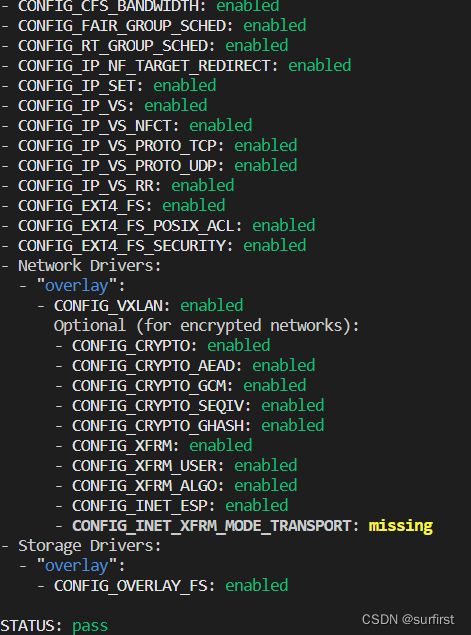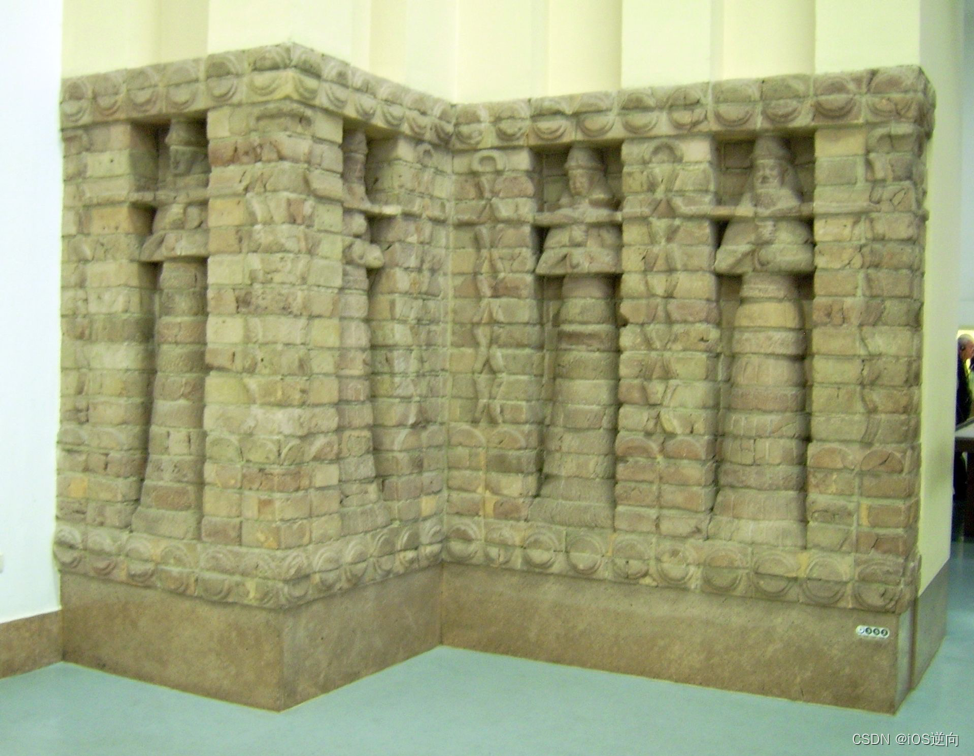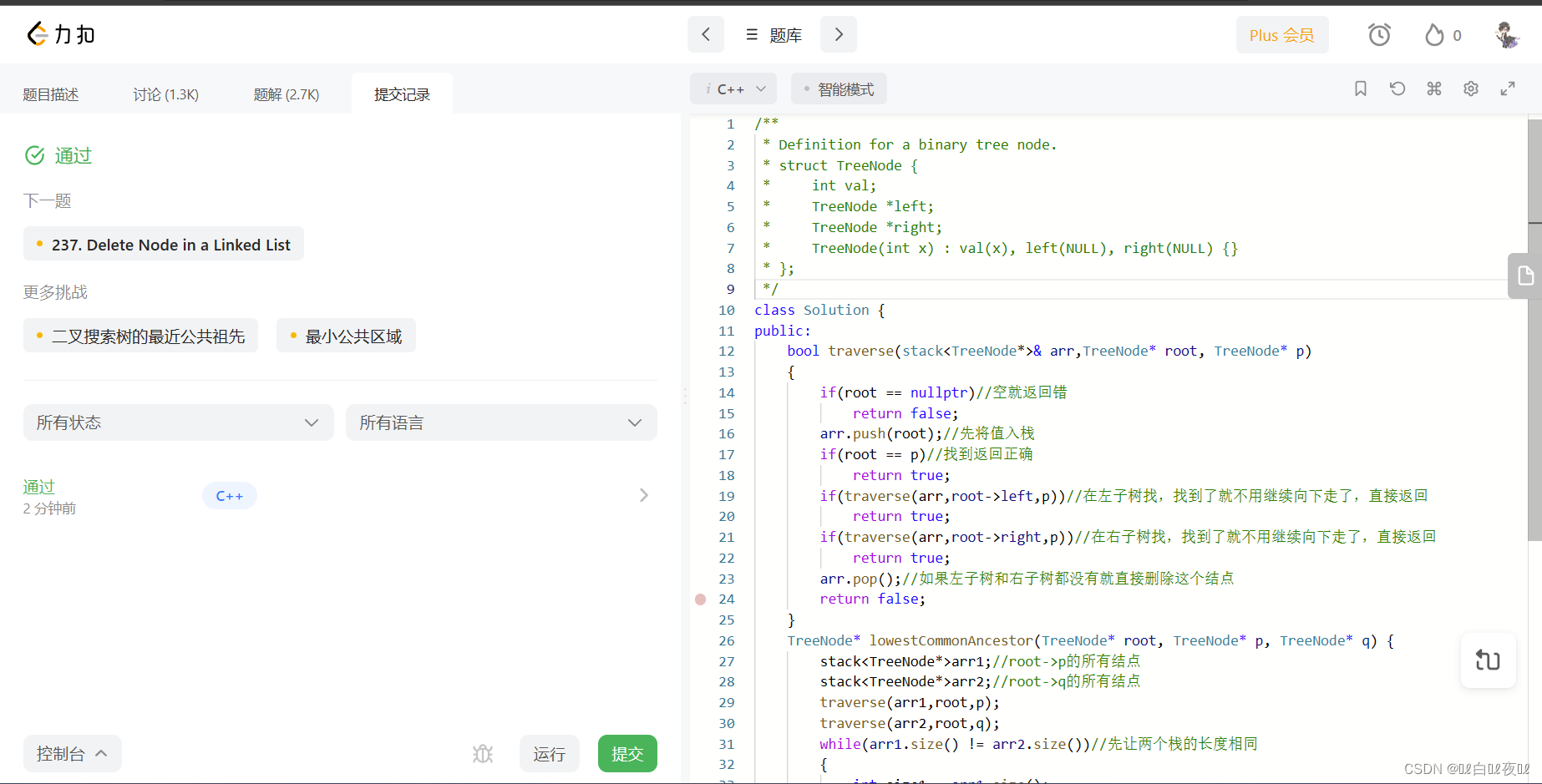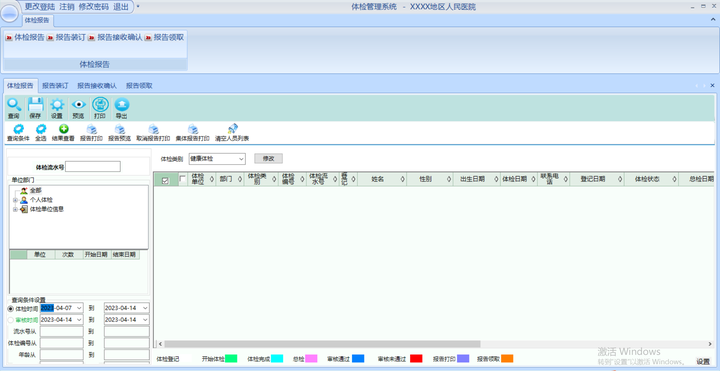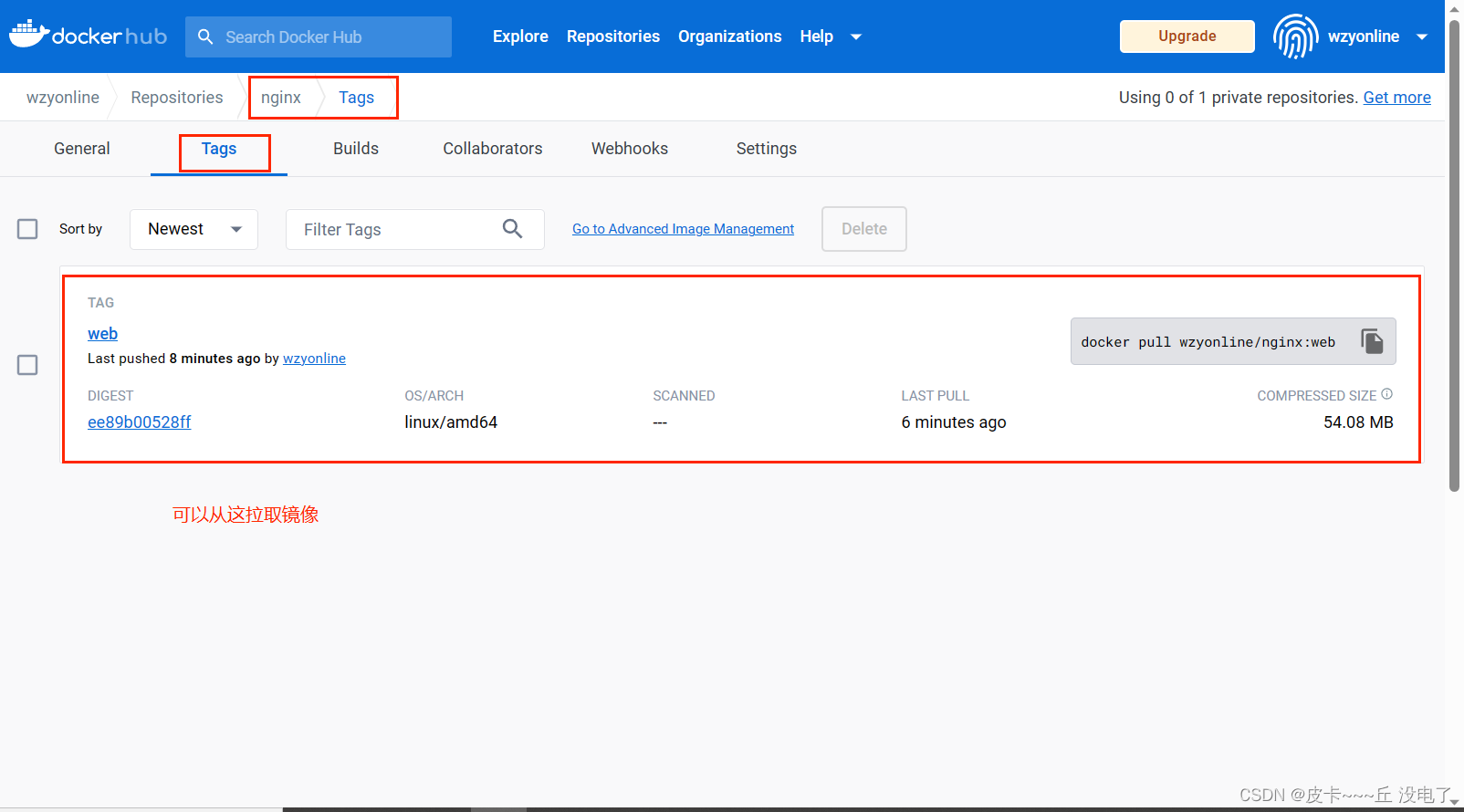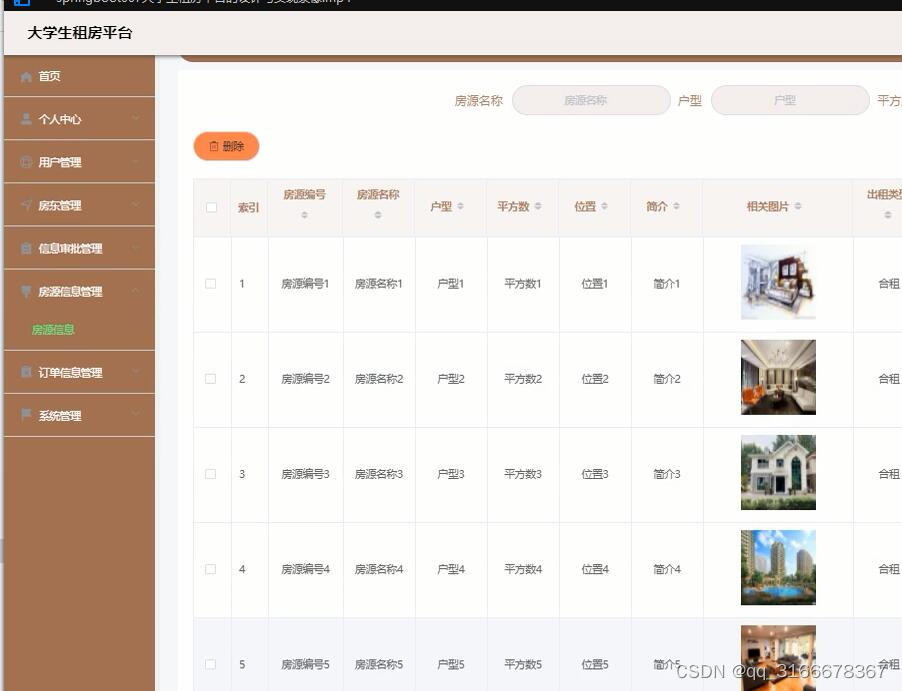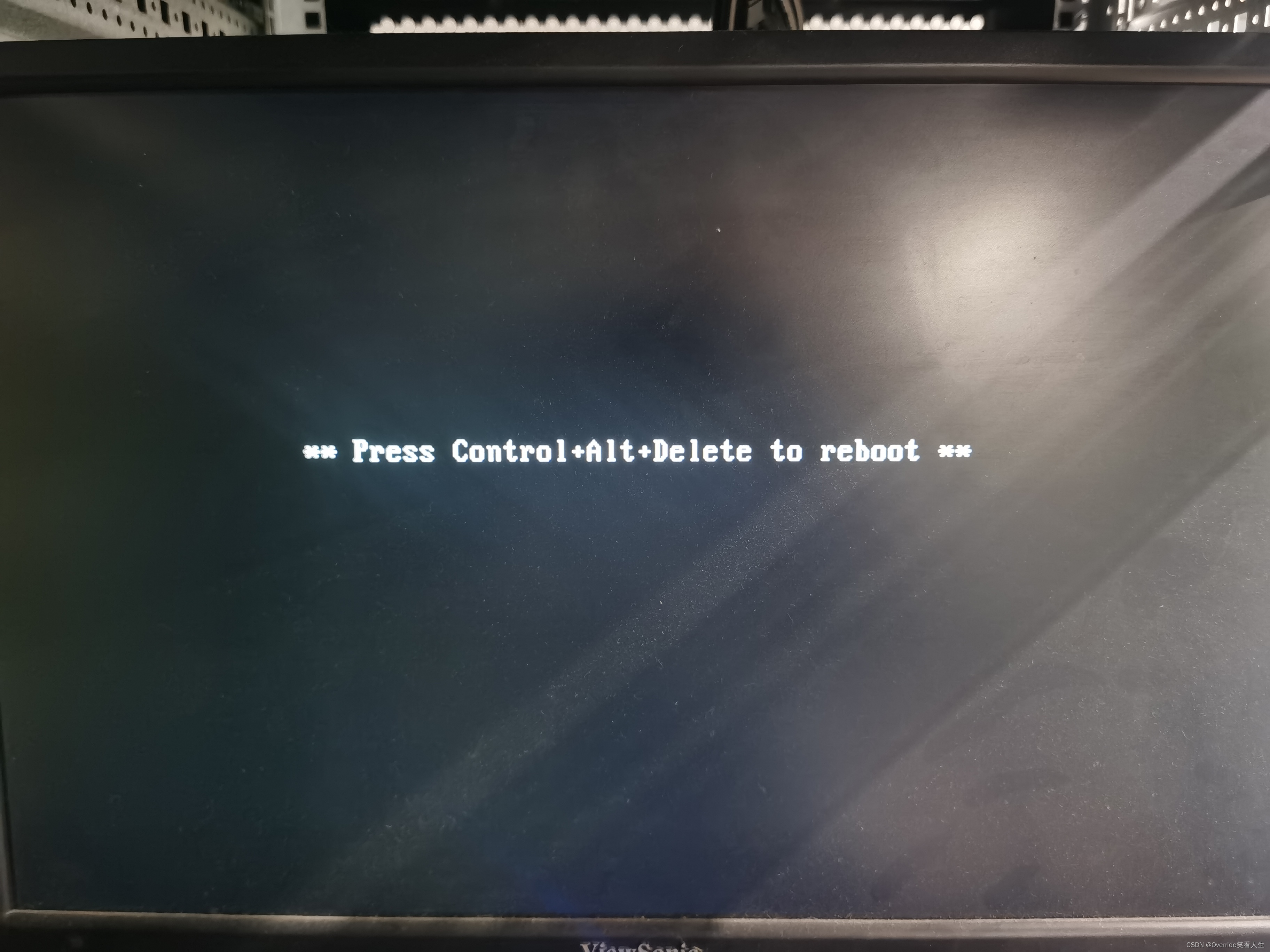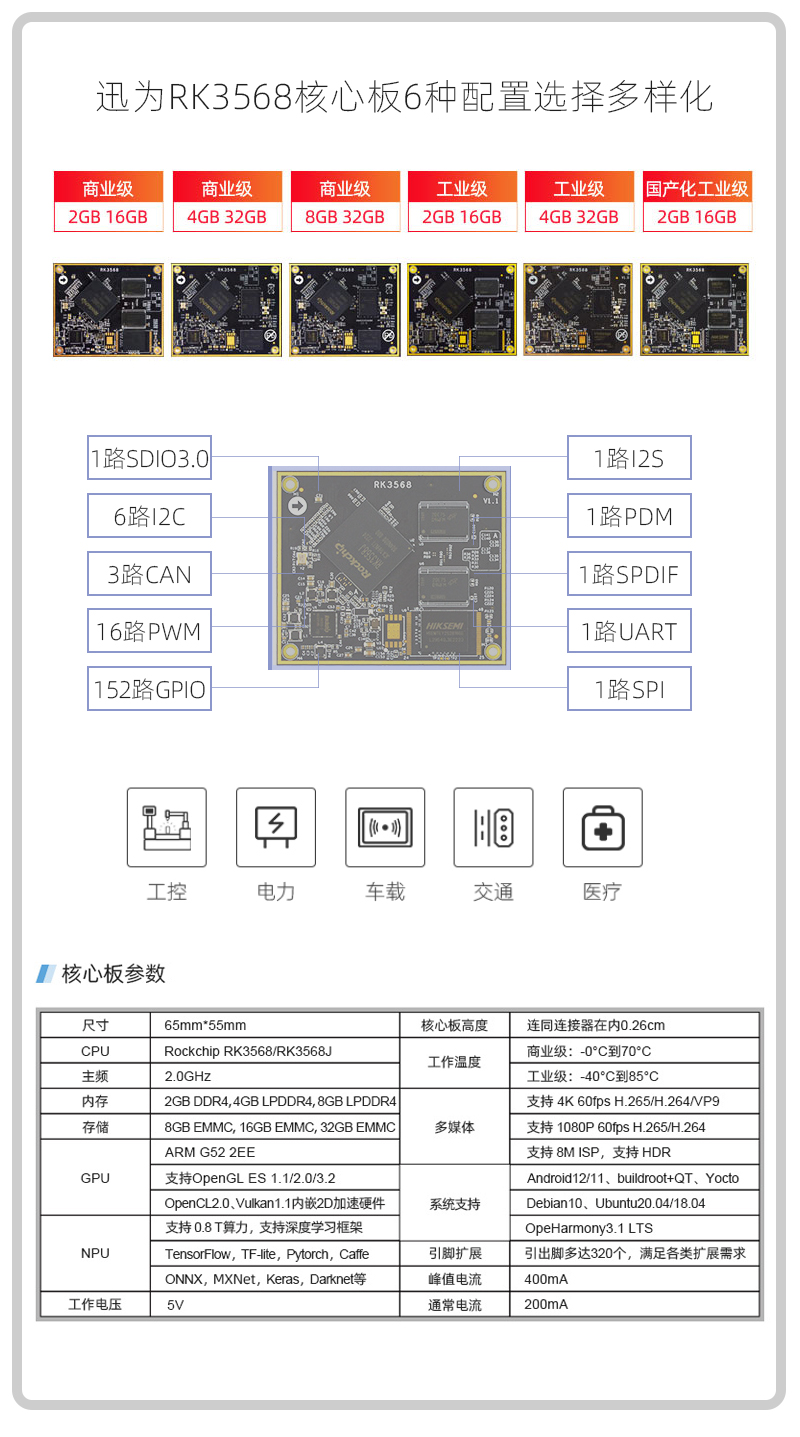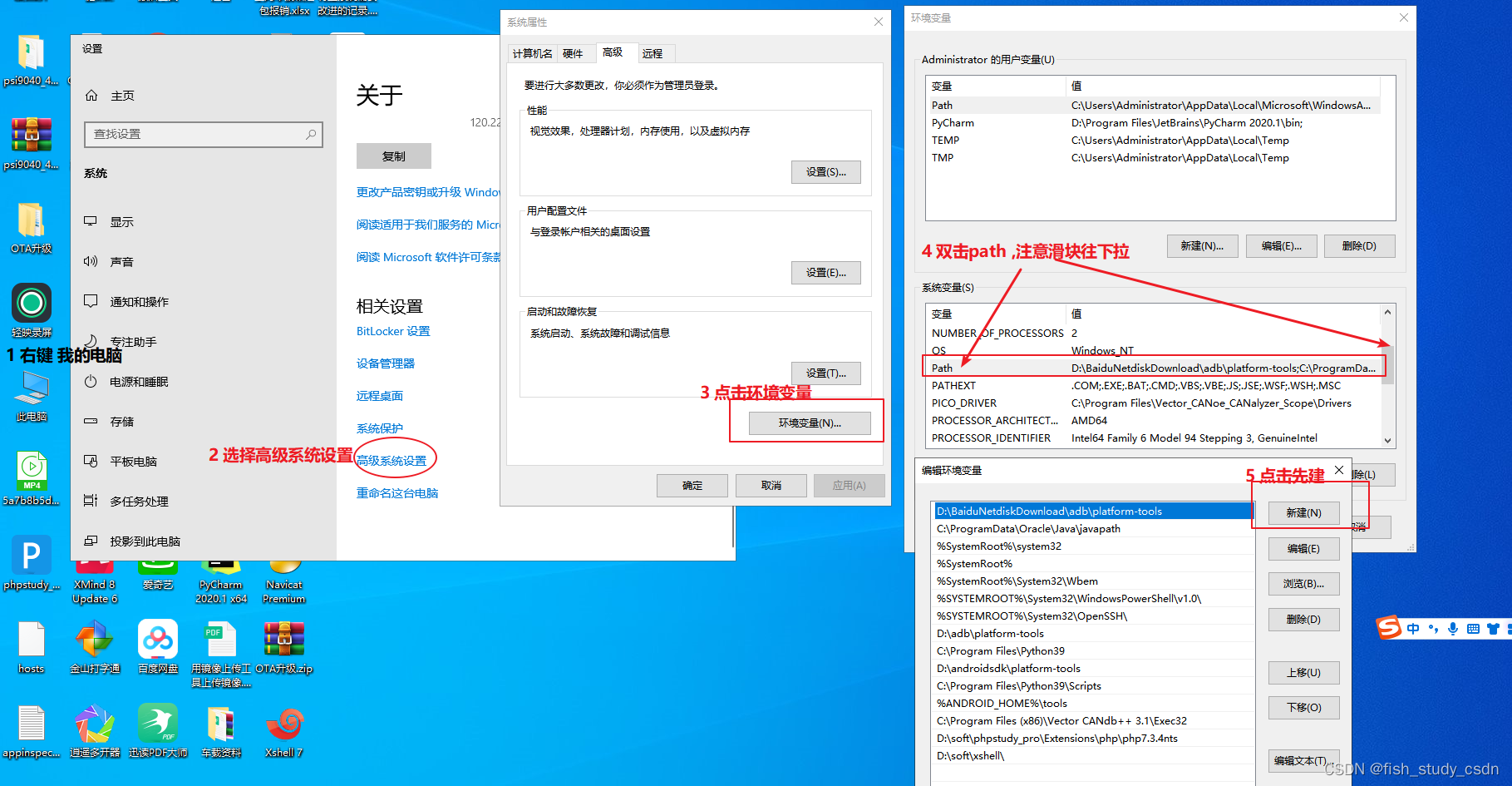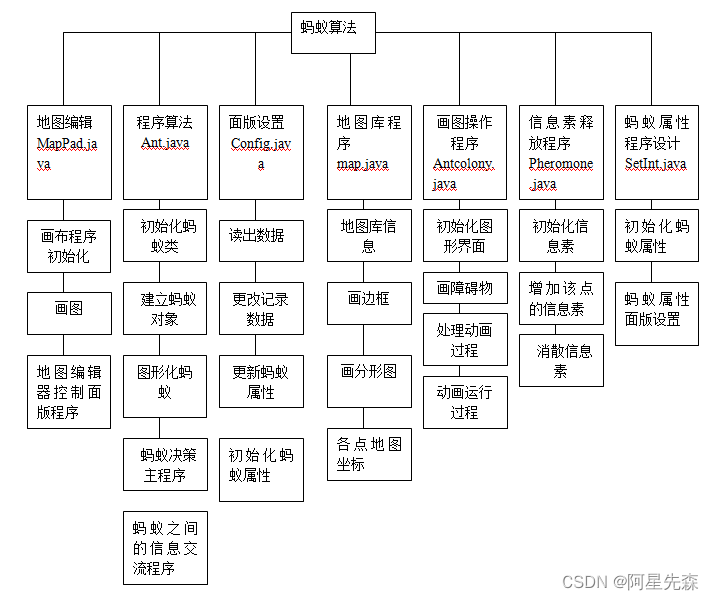soot代码分析框架的基础知识(二)_soot 代码分析_小作坊中搬砖的博客-CSDN博客
Soot中的结构
本篇内容简单概括一下:soot中存在的主要对象、soot的执行流。
Soot中提供了几种对象,分别是:Scene、SootClass、SootMethod、SootField、Body。表示的意义如下所示:
Scene:Scene表示完整的分析环境,可以通过Scene.v()调用设置Options的API,也可以获取一些过程间分析的信息,如call graphs和points-to information(指向性分析)。如果分析的是Java工程,可以获取待分析的工程中存在哪些类。
SootClass:表示soot加载的待分析的类或者soot创建的类。如果分析的是Java源码,可以理解为SootClass对象代表Java源码中的某个类。
SootMethod:表示SootClass中的单个方法。
SootField:表示SootClass中的某个字段。
Body:表示方法主体,由Locals链(body.getLoclas())、Units链(body.getUnits())、Traps链(body.getTraps())组成。Locals链存储方法中的变量定义、Units链存储方法中的句子、Traps链存储方法中发生异常的语句。如下代码片段:
public int bar(){
Foo r0;
int i0,$i1;
r0:=@this:Foo;//IdentityStmt
i0:=@parameter():int;//IdentityStmt
$i1=i0+21;//AssignStmt
Return $i1;//ReturnStmt
}Body.getLocals()得到的链存储的内容就是:Foor0;int i0,$i1;
Body.getUnits()得到的链存储的内容就是:r0:=…;…Return$i1;
Stmt与Unit
Stmt与Unit都表示方法中的一个句子。interface Unit继承于interface Stmt;同样AssignStmt、IdentityStmt、IfStmt、RetrunVoidStmt、NopStmt等也继承于interface Stmt。它们的不同在于:Unit注重于句子的构成、而AssignStmt这些则注重于是哪种句式。需要注意的是:AssignStmt表示赋值语句;而IdentityStmt表示将参数赋值给Local这样的语句。
下面是Unit对象提供的一些关键API:
public List<ValueBox> getUseBoxes();//返回Unit中使用的Value的引用
public List<ValueBox> getDefBoxes();//返回Unit中定义的Value的引用
public List<ValueBox> getUseAndDefBox();//返回Unit中定义并使用的Value的引用
public List geUnitBoxes();//获得被这个unit跳转到的UnitxBox的List
public List getBoxesPointingTothis();//获得该unit作为跳转对象时,所有跳转本身的UnitBox
public boolean fallsThrough();//如果接下来执行后面挨着的unit,则为true
public boolean branches();//如果执行时会跳转到其他别的unit,则返回true。如:IfStmt、GotoStmt
public void rediectJumpsToThisTo(Unit newLocation);//该方法把跳转到该unit重定向到newLocation注:一般Value指的是Local(变量)、Expr(表达式)、Constant(常量)。
Soot的中间语言:
soot可以生成四种不同的中间语言:grimple、shimple、jimple、baf。其中一般采用的过程内/过程间分析都在在jimple中间语言上进行的。中间语言的特点灯具体信息可以查看A Survivor’s Guide to Java Program Analysis with Soot第8-15页内容。
Soot的执行流
Soot执行被分成几个阶段,这些阶段被称为packs。第一步是生成Jimple代码,然后将Jimple代码输入到其他packs中。这个步骤是通过解析class、jimple或java文件再通过Jimple Body(jb)传递它们的结果而完成的。
Soot根据分析问题是过程内分析还是过程间分析,会有不同的执行流。
过程内分析的执行流
过程内分析简单的说就是被分析的程序中不存在函数调用。
这些Pack的命名规则非常简单:第一个字母表示采用哪种中间语言,如:s表示shimple,j表示jimple,b表示baf,g表示grimp;第二个字母表示进行的pack的哪一步,如:b表示body creation,t表示transformation,o表示optimizations,a表示annotion。例如:jap表示jimple annotations pack。(注:命名规则在过程内分析、过程间分析都适用)
如上图所示:一般每种语言都有:transformation(转换)、optimizations(优化)、annotion(注释)三步。注意上图应该省略了jb(jimple bodycreation)这个阶段。
其中,在jtp和stp阶段是允许我们插入自定义的transformation(指的并不是添加jtp,而是jtp阶段中的某一步)。
PackManager.v().getPack("jtp").add(new Transform("jtp.myTransform", new BodyTransformer(){
@Override
protected void internalTransform(Body b, String phaseName,
Map options) {
// TODO Auto-generated method stub
...
}
}上述代码就是在jtp pack中插入小步骤myTransform,但soot的执行流执行完自定义的myTransform后,将继续沿着执行流执行,自定义的小步骤就像soot的一个插件,并不影响其他的执行流顺序。
过程间分析的执行流
过程间分析简单的说就是存在函数调用。
在过程间分析中,soot的执行流会有所不同。在过程间分析时,需要指定soot运行在whole-program mode下。此时,soot会增加三个阶段:cg(call-graph generation)、wjtp(whole jimple transformation pack)、wjap(whole jimple annotation pack)。
jb:指的是jimple body creation。Soot会对所有的method body执行jimple body creation,不可改变,与jimple生成有关。
其中,可以向此执行流中添加自定义的wjtp(此处指的并不是添加wjtp,而是在wjtp这个阶段中的添加某一步)。
PackManager.v().getPack("wjtp").add(
new Transform("wjtp.myTransform", new SceneTransformer() {
@Override
protected void internalTransform(String arg0,
Map<String, String> arg1) {
// TODO Auto-generated method stub
...
}
}));上述代码就是在wjtp pack中插入一个小步骤myTransform。 但soot的执行流执行完自定义的myTransform后,将继续沿着执行流执行,自定义的小步骤就像soot的一个插件,并不影响其他的执行流顺序。
注意:上述的过程内soot执行流和过程间soot执行流都只是列出了pack,而在每个pack中仍然存在数个小步骤。
如果需要查看可用的pack信息,可以使用下述命令:
java –cp soot-trunk.jar soot.Main -pl
如果想查看某个pack的帮助信息,可以使用下述命令:
java –cp soot-trunk.jar soot.Main -ph PACK
下面则是使用第一条命令时,得到的可用的pack信息
jb Creates a JimpleBody for each method
jb.ls Local splitter: one local per DU-UD web
jb.a Aggregator: removes some unnecessary copies
jb.ule Unused local eliminator
jb.tr Assigns types to locals
jb.ulp Local packer: minimizes number of locals
jb.lns Local name standardizer
jb.cp Copy propagator
jb.dae Dead assignment eliminator
jb.cp-ule Post-copy propagation unused local eliminator
jb.lp Local packer: minimizes number of locals
jb.ne Nop eliminator
jb.uce Unreachable code eliminator
jb.tt Trap Tightener
jj Creates a JimpleBody for each method directly
from source
jj.ls Local splitter: one local per DU-UD web
jj.a Aggregator: removes some unnecessary copies
jj.ule Unused local eliminator
jj.tr Assigns types to locals
jj.ulp Local packer: minimizes number of locals
jj.lns Local name standardizer
jj.cp Copy propagator
jj.dae Dead assignment eliminator
jj.cp-ule Post-copy propagation unused local eliminator
jj.lp Local packer: minimizes number of locals
jj.ne Nop eliminator
jj.uce Unreachable code eliminator
wjpp Whole Jimple Pre-processing Pack
wspp Whole Shimple Pre-processing Pack
cg Call graph constructor
cg.cha Builds call graph using Class Hierarchy
Analysis
cg.spark Spark points-to analysis framework
cg.paddle Paddle points-to analysis framework
wstp Whole-shimple transformation pack
wsop Whole-shimple optimization pack
wjtp Whole-jimple transformation pack
wjtp.mhp Determines what statements may be run
concurrently
wjtp.tn Finds critical sections, allocates locks
wjtp.rdc Rename duplicated classes when the file
system is not case sensitive
wjop Whole-jimple optimization pack
wjop.smb Static method binder: Devirtualizes
monomorphic calls
wjop.si Static inliner: inlines monomorphic calls
wjap Whole-jimple annotation pack: adds
interprocedural tags
wjap.ra Rectangular array finder
wjap.umt Tags all unreachable methods
wjap.uft Tags all unreachable fields
wjap.tqt Tags all qualifiers that could be tighter
wjap.cgg Creates graphical call graph.
wjap.purity Emit purity attributes
shimple Sets parameters for Shimple SSA form
stp Shimple transformation pack
sop Shimple optimization pack
sop.cpf Shimple constant propagator and folder
jtp Jimple transformation pack: intraprocedural
analyses added to Soot
jop Jimple optimization pack (intraprocedural)
jop.cse Common subexpression eliminator
jop.bcm Busy code motion: unaggressive partial
redundancy elimination
jop.lcm Lazy code motion: aggressive partial
redundancy elimination
jop.cp Copy propagator
jop.cpf Constant propagator and folder
jop.cbf Conditional branch folder
jop.dae Dead assignment eliminator
jop.nce Null Check Eliminator
jop.uce1 Unreachable code eliminator, pass 1
jop.ubf1 Unconditional branch folder, pass 1
jop.uce2 Unreachable code eliminator, pass 2
jop.ubf2 Unconditional branch folder, pass 2
jop.ule Unused local eliminator
jap Jimple annotation pack: adds intraprocedural
tags
jap.npc Null pointer checker
jap.npcolorer Null pointer colourer: tags references for
eclipse
jap.abc Array bound checker
jap.profiling Instruments null pointer and array checks
jap.sea Side effect tagger
jap.fieldrw Field read/write tagger
jap.cgtagger Call graph tagger
jap.parity Parity tagger
jap.pat Colour-codes method parameters that may be
aliased
jap.lvtagger Creates color tags for live variables
jap.rdtagger Creates link tags for reaching defs
jap.che Indicates whether cast checks can be
eliminated
jap.umt Inserts assertions into unreachable methods
jap.lit Tags loop invariants
jap.aet Tags statements with sets of available
expressions
jap.dmt Tags dominators of statement
gb Creates a GrimpBody for each method
gb.a1 Aggregator: removes some copies, pre-folding
gb.cf Constructor folder
gb.a2 Aggregator: removes some copies, post-folding
gb.ule Unused local eliminator
gop Grimp optimization pack
bb Creates Baf bodies
bb.lso Load store optimizer
bb.pho Peephole optimizer
bb.ule Unused local eliminator
bb.lp Local packer: minimizes number of locals
bop Baf optimization pack
tag Tag aggregator: turns tags into attributes
tag.ln Line number aggregator
tag.an Array bounds and null pointer check
aggregator
tag.dep Dependence aggregator
tag.fieldrw Field read/write aggregator
db Dummy phase to store options for Dava
db.transformations The Dava back-end with all its
transformations
db.renamer Apply heuristics based naming of local
variables
db.deobfuscate Apply de-obfuscation analyses
db.force-recompile Try to get recompilable code. 

